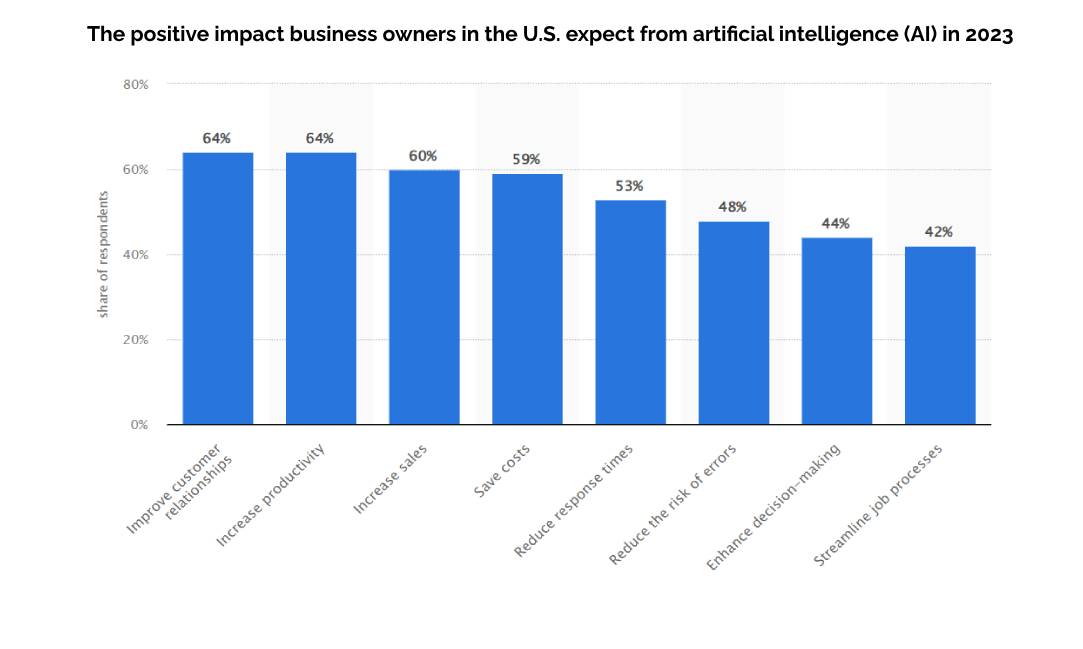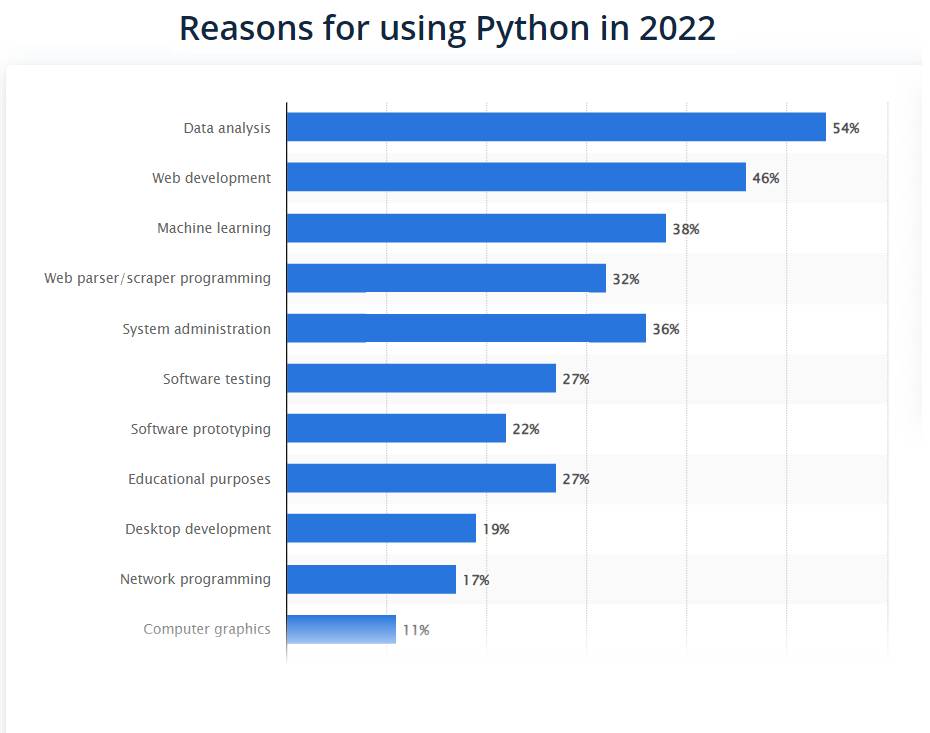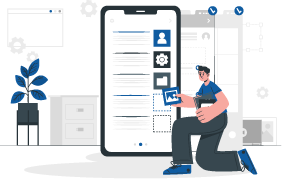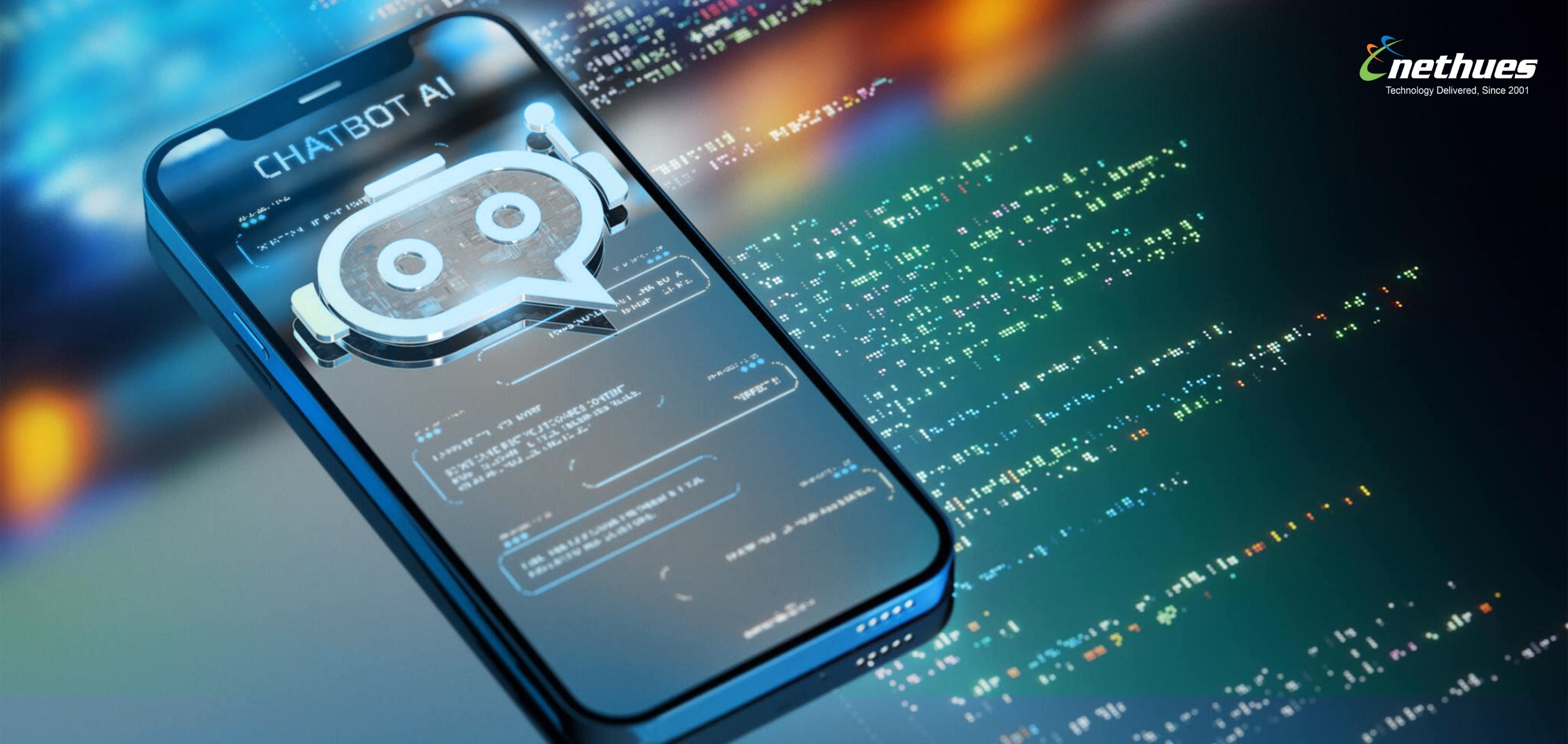Artificial intelligence (AI) and machine learning (ML) have taken the market by storm, and all IT projects leverage these technologies to design modern solutions. AI app development technology offers immense benefits to companies by automating various repetitive tasks and processes. Disruptive technology helps businesses complete simple and complex operations in a hassle-free way.
Research by Fortune Business Insights indicates that the AI market value will grow from $515.31 billion in 2023 to $2,025.12 billion by 2030. The global AI adoption rate has grown steadily over the years & stands at 35% in 2023.
AI is simple to understand, but a project requires a sound knowledge of the technologies and the development processes. In this article, we will help you know how to build an AI app that achieves goals and maximizes business growth.
What is Artificial Intelligence?
AI technology allows machines to think and act like humans and emit advanced levels of perceiving, reasoning, learning, and interacting with any surrounding environment. This branch of modern science helps build complete solutions that can cater to diverse tasks with minimum human interference.
AI has evolved into various simple and complex technologies like chatbots, machine learning, sentiment analysis, and others, which help address modern problems with hi-tech approaches. As per IBM, as much as 42% of companies were exploring the possibilities of artificial intelligence in diverse business processes in 2022.
5 Major Components of Artificial Intelligence Technology
1. Learning
AI learning involves feeding large amounts of data to machines or computer systems in the form of algorithms that are memorized by the systems. Massive data helps to address the 360-degree analysis of specific problems, which is vital for building accurate solutions for development projects. The more diverse the dataset, the more precise the AI project can become.
For example, machine learning, a branch of AI, can detect hidden correlations between various data sets for generating error-proof solutions that predict likely outcomes for the business. ML plays a significant role for enterprises in customer churn modeling, client segmentation, targeted marketing, and sales forecasting.
2. Reasoning
AI can draw inductive and deductive inferences, allowing the technology to think logically. This causes a massive shift from traditional software solutions. For example, AI-powered chatbots leverage reasoning capabilities to present customers with apt answers. This helps to enhance human-machine interactions & form intimate bonds between the company and the customers.
3. Problem-Solving
AI problem-solving skills revolve around the application and manipulation of data. For more advanced AI problem-solving capabilities, developers can include advanced algorithms and conduct root cause analysis focused on desired solutions.
Standard examples of AI problem-solving skills involve the implementation of predictive technology in the area of online shopping. This proves helpful in identifying the exact products the customers search for with vague descriptions or keywords. AI tends to understand user queries with minimum & vague inputs, so people feel more connected to the technology.
4. Perception
AI implements perception via sensors, cameras, and other technologies to scan the environment and conclude the right course of action. This technology has been implemented for autonomous driving as AI can successfully comprehend the surrounding environment & traffic over the actual roads.
5. Language-understanding
AI processes language understanding capabilities in simple forms like identifying and correcting spelling errors. The algorithm uses standard neural networks and scans large bodies of text for correct misspelled words and other language errors. AI also implements language processing capabilities to weed out spam over email systems.
Revolutionary Elements of AI Technology
When undertaking AI application development, understanding the significant forms of the technology can help you identify the most viable ones for the project. While AI involves multiple elements, the most standard ones are:
Machine Learning
Machine learning applications of artificial intelligence allow computer devices to interpret, execute, and analyze data to resolve real-world problems. AI developers can build complex ML systems according to the project demand. ML has emerged as one of the most demanding applications of AI and has been integrated into self-driving cars, image and speech recognition, forecasting models, predictive analysis, etc.
Neutral Networks
Neural networks are the collection of algorithms that help AI identify the elemental relationships among the data sets, which mimic the human brain’s neurons. The AI neurons are made up of mathematical functions for collecting and classifying data according to their structure. The neural networks are responsible for proper AI functioning and help with forecasting, detection of fraudulence, risk analysis, & stock exchange prediction.
Robotics
AI is gaining by leaps and bounds in the field of Robotics and has also formed the basis for humanoid robot development. Some of the leading applications of AI robotics are in healthcare, material handling, lights-out factories, spacecraft applications, and many more.
Natural Language Processing (NLP)
AI uses NLP to talk to humans in natural languages like English, German, French, and many more. This leads to greater technology adoption and seamless communication between man and machine. It also helps to communicate data to machines in the form of texts, voice, and more.
How does AI App Development Benefit businesses?

Creating AI apps can help businesses build enriching user experiences and boost investment returns. AI-powered apps are easier to use and have greater chances of conversions. Some of the most fascinating benefits of artificial intelligence for business are:
- Greater automation of several tasks and activities
- Boosts productivity and efficiency in the team
- Helps with data-driven decision-making processes
- Eliminates human errors in handling repetitive tasks
- Improves customer satisfaction
- Keeps you prepared for future technologies & integrations
Features & Technologies Used to Build AI Apps
| Standard Features of AI Apps | AI Development Technologies | Popular AI-Powered Apps |
|
|
|
7 Simple Steps to Build an AI App
Having discussed the technology in detail, we will unveil a step-by-step guide for developing AI applications. Whether an amateur or a business owner, the following steps can help you create immersive AI apps.

Step 1: Objective Analysis & Planning
The foremost step for any development project is determining and establishing goals. This involves the identification of the problems that you want to resolve with the AI app. Once you have identified the core problems the app will cater to, start researching the target audience. It will help you enlist core essential features for the app.
Additionally, you can do the following in the planning phase of the project:
- Hire app developers or a complete team to handle the project.
- Discuss the work schedule and ask for a well-defined roadmap for the AI project.
- Explore various options to obtain reliable data for feeding into the AI algorithms.
Step 2: Data Preparation for AI Algorithms
Building AI-powered apps typically involves handling massive amounts of data for the algorithms. This means you need resources to obtain raw data that the AI-specialized team can work with. AI software engineers can further optimize the data obtained from Cross-Industry Standard Processes for Data Mining (CRISP-DM).
Getting the data models ready for the project involves testing for errors and correcting missing values and labels. Once the data models are prepared for the project, They are used to train the ML model with appropriate methods.
Step 3: Choosing the Right Algorithm
This is the most significant step when discussing how to develop AI applications. A clear understanding of the fundamental concepts can help you choose a suitable algorithm for the project. Algorithms can be classified into different forms, but the two main types based on the learning method are supervised & unsupervised learning.
Supervised learning offers a labeled dataset to machines. These datasets are focused on supervising algorithms for classifying data or predicting accurate outcomes for the final model. The availability of the labeled datasets allows the model to achieve accuracy in less time. Standard supervised learning algorithms are SVM (Support Vector Machine), Logistic Regression, Naive Bayes Classification, etc.
Unsupervised learning does not come with labeled datasets and is applicable to clustering solutions. They are helpful for AI models where the algorithms need to group things with similar associations.
Carefully examine the requirements of the AI mobile app development project for choosing the ideal learning algorithms.
Step 4: Training the Algorithms
The next step is to determine whether the chosen algorithm meets the desired accuracy and works glitch-free with the desired framework. As the AI model essentially works with data, the chosen datasets must be able to train the model for accurate responses for various possible outcomes. Failing to achieve this can delay the project and affect the time-to-market of the ideas.
Step 5: Code with the Ideal Programming Language for the project
Some of the standard languages for AI development are Python, Java, C++, R, and Prolog. While various AI programming languages can help you create robust code, the market is dominated by Python developers.
Additionally, Python language has various up-to-date libraries for supporting any app idea focussed on AI models, machine learning, data science, and others. This helps the developer’s team to code quickly. Some of the best Python libraries used for building artificial intelligence apps are Numpy, Pandas, Matplotlib, SciPy, TensorFlow, etc.
You can choose the ideal libraries and frameworks based on specific project requirements. This helps to build a technology stack that offers high flexibility to the project.
The infographic below surveys Python’s popularity for diverse development projects.

Step 6: Proceed with UI & Code Development
Once done with the above steps, the rest of the process follows the same as other software or SaaS application development steps. It typically involves the following:
- Design interactive frontends for the project
- Create a robust backend for the app
- Test and optimize the application performance
Step 7: Deployment & Performance Monitoring
After testing the developed application, the next step is to launch it over a server, followed by a final application launch. However, unlike regular apps, An AI app requires dedicated maintenance for at least a few months.
The maintenance period of the AI app involves continuous data and concept updates for the users. You can achieve greater accuracy, which further boosts the user experience of the launched app.
Wrapping Up
AI technology can help businesses launch successful apps and IT solutions with the highest sophistication. However, accuracy plays a pivotal role in the success of AI-powered apps.
At Nethues, an app development company, we can help you create AI mobile apps with valuable authenticity and performance that binds users’ fidelity.







